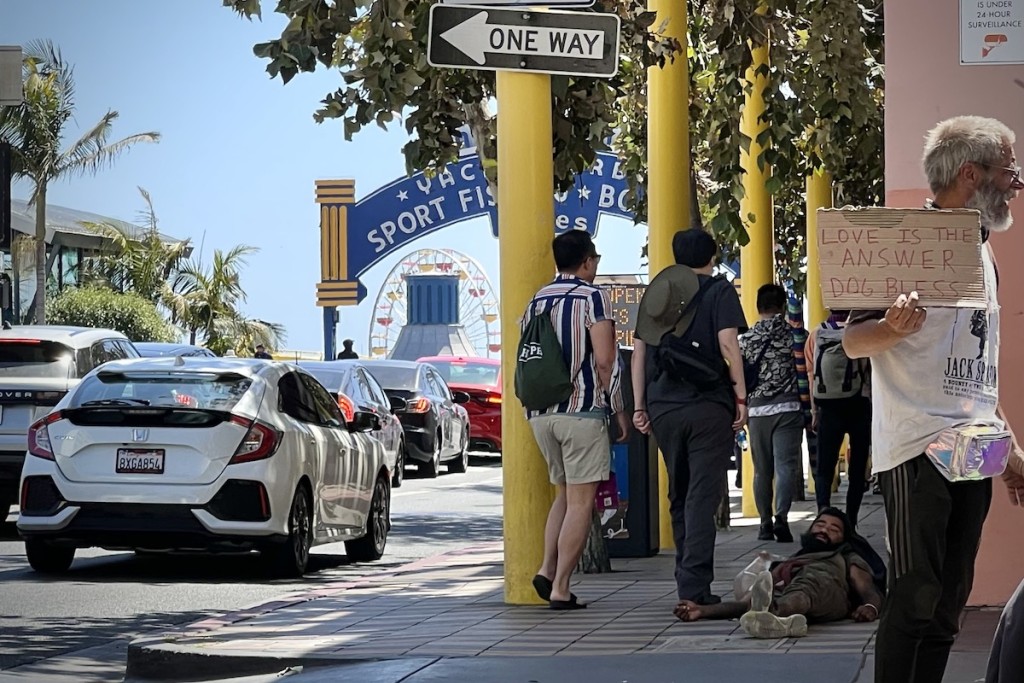Results show a small increase countywide in homeless and a decrease on the Westside
By Sam Catanzaro
The Los Angeles Homeless Service Authority (LAHSA) has released the results of the 2022 homeless count showing a small increase countywide in homeless and a decrease on the Westside.
This year’s count was LA County’s first since 2020, as the 2021 count was canceled due to COVID-19.
According to the 2020 count, the county’s homeless population increased by 12.7% over the previous year, while the city of Los Angeles’ homeless population jumped by 14.2%. On the Westside for the 2020 count, LA City Council Council District 11 saw a 40 percent increase in its homeless population, while Council District 5 saw a 10 percent increase. Citywide in 2020, Los Angeles saw a 16 percent increase in homelessness.
LAHSA was set to release the 2022 count results earlier this summer but postponed it in July because of a delay by the United States Department of Housing and Urban Development in validating the data.
According to the 2022 results, countywide, the homeless population increased by 4.1 percent, showing that an estimated 69,144 people were experiencing homelessness in LA County at that time of the count this winter.
For the City of Los Angeles, the homeless population increased by 1.7 percent, a total of 13,522 people. Council District 11 (which includes Venice) saw a 38.5 percent decrease in homelessness (2,012 total persons), while Venice itself saw a 50 percent decrease (981 total persons).
In Council District 5, which includes Century City and Westwood, the 2022 results show a 3.4 percent increase in homelessness (465 total persons).
The City of Santa Monica conducted a separate count in Febuary and released the results in May showing a 1 percent increase in homelessness.
In announcing the results Thursday, LAHSA said the pandemic made homelessness appear “more visible” than the 4 percent increase suggests.
“This year’s Homeless Count revealed a 17% increase in tents, vehicles, and makeshift shelters on LA County’s streets and sidewalks from 2020–but with fewer people in them. At the same time, LA County’s unsheltered population rose by only 1%. This means LA County saw a significant increase in the evidence of homelessness without a corresponding rise in our unsheltered neighbors,” LAHSA said in a press release.
LAHSA applauded one-time federal assistance and local economic policies like eviction moratoriums as helpful tools that kept people off the street.
“Policy and investments matter. Tenant protections and rental assistance helped people stay in their homes and out of homelessness,” said Molly Rysman, Acting Co-Executive Director of LAHSA. “But now our community is in a precarious position. If these policies end, it is entirely possible that future homeless counts could show significant increases. We need those critical policies to continue.”
LAHSA recommended that every jurisdiction in LA County continue increasing its housing investments.
“National best practices show that a rehousing system works most effectively to reduce homelessness when there are five permanent housing units available for every shelter bed. LA’s current ratio is one housing exit per shelter bed,” LAHSA said.
The release of the results has been met with a flurry of reactions from local stakeholders, politicians and organizations.
“These numbers reinforce truths that everyone who works tirelessly on this knows in their hearts and minds: visible and lasting progress can only come through investments in long-term, affordable, and quality housing solutions,” said Mayor Eric Garcetti
Elizabeth Benson Forer, CEO of Venice Family Clinic, a nonprofit community health center that provides health care to homeless individuals, called for long-term solutions to homelessness.
“While this year’s Homeless Count showed smaller increases in the number of people experiencing homelessness than in recent years, the ending of COVID-19 programs, like Project Roomkey and Project Homekey, are likely to push more people out of housing and into the streets in the year ahead,” Forer said in a statement. “We call on all our region’s leaders to develop long-term solutions, including permanent supportive housing, that will ensure stability and increase the likelihood of success in addressing homelessness. While shelters provide temporary housing, they are not a long-term solution. We must also work together to prevent people from losing their homes and ensure people experiencing homelessness get the health care and other services they need to stay housed.
John Maceri, CEO of The People Concern, one of Los Angeles County’s largest housing and social service agencies described the results as “cautiously optimistic”.
“We are disappointed to see the numbers increase again, but we are cautiously optimistic that the increase is at a lower rate than we have seen in previous years,” Maceri said. “We know what works to end homelessness – housing coupled with support services. The 2022 Homeless Count results reinforce that service providers, government leaders and the private sector must work together to increase the availability of affordable and permanent supportive housing.”
People Assisting the Homeless (PATH) CEO, Jennifer Hark Dietz has shared the following statement along similar lines.
“LAHSA’s 2022 Homeless Count data confirms what PATH team members and our community witness every day: that homelessness has increased. This upward trend mirrors what we’re seeing in many other regions in California and reflects the rising cost of housing throughout the state. Inflation has also intensified the problem, as rent has increased at its fastest rate since the 1980’s, putting homes out of reach for more individuals and families,” Hark said. “It is important to note that unsheltered homelessness in Los Angeles County has gone down and the pandemic could have resulted in a massive increase in homelessness overall. Initiatives such as Project Roomkey, Project Homekey and emergency funding for services have proved that when you properly resource this crisis, we see results. We must make sure that people can connect to interim housing and a range of supportive services, but at the end of the day if the affordable housing stock is not there, people will either remain in shelters or outdoors, with no permanent home in sight.”
At the local level, Councilmember Mike Bonin who represents CD 11, celebrated the results.
“While homelessness ticked up 2% citywide and 4% countywide from 2020 to 2022, LAHSA’s data shows it dropped 38.5% in District 11. That’s better than any other part of the City of Los Angeles. That demonstrates that it’s housing and services that end homelessness; it’s not enforcement and criminalization,” Bonin said. “Before the City Council repeals any COVID-era tenant protections, we need to approve new, tough permanent protections, including a fully-funded right to counsel, universal “just cause” eviction rules, increased relocation assistance, limits on rent increases, and removal of discriminatory barriers to rental housing.”
Bonin is not running for reelection in the November election. Traci Park, who is running against Erin Darling to replace this seat, issued a statement that was a contrast to Bonin’s, calling the results “sobering”
“Today’s release of the homeless count by city and county leaders continues to be sobering. This is not an unsolvable problem; it is a matter of resolve and leadership. When elected, I will focus on the inhumanity of homelessness and encampment living with the urgency this problem demands. We must get people off the streets, for the health and safety of the entire community. We will not criminalize poverty, addiction, or mental health disorders. But we must insist on clean and safe streets, parks, and neighborhoods,” Park said.
Darling commented on the results as well, with remarks that echoed Bonin’s statement.
“2022 LAHSA homeless count shows LA’s largest decrease in homelessness occurred in District 11. Take a look at this tool to see for yourself. We know what works: prevention and services. Solutions not scapegoating!” Darling said.













